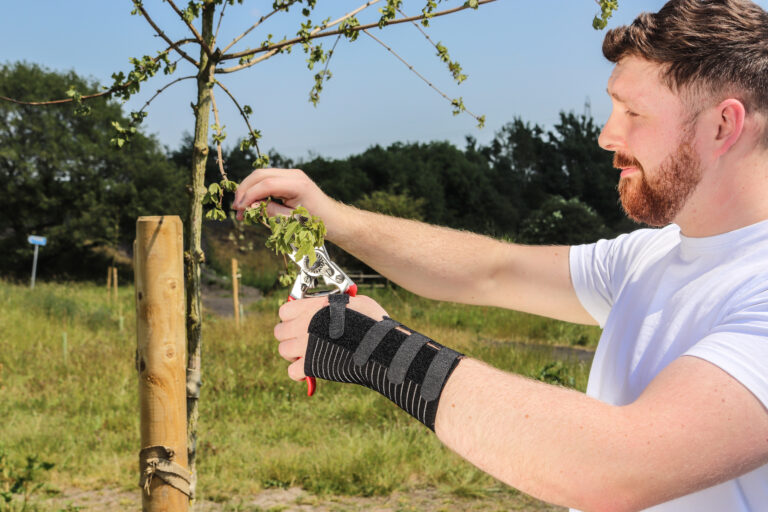
A wrist sprain occurs when the strong ligaments that support the wrist stretch beyond their limits or tear. This occurs when the wrist is bent or twisted forcefully, such as caused by a fall onto an outstretched hand. Wrist sprains are common injuries. They can range from mild to severe, depending on how much damage there is to the ligaments.
Ligaments are strong, fibrous tissues that connect bones to other bones. The ligaments in the wrist help to keep the bones in proper position and stabilize the joint.
Sprains can range from a stretch or tiny tear in the fibres that make up the ligament to a complete tear through the ligament or its attachment to the bone.
Sprains are graded, depending on the degree of injury to the ligaments:


Wrist sprains are caused most often by a fall onto an outstretched hand. This might happen during everyday activities but frequently occurs during sports and outdoor leisure activities. You may sprain your wrist if you fall onto an outstretched hand.
A sprained wrist is painful. Other symptoms may include:
Therefore, after treating at home if symptoms persist medical help should be sought out. If you believe your injury is severe seek out medical assistance as soon as possible.
Treatment for a wrist sprain depends upon the severity of the injury.
Mild wrist sprains will usually improve with home treatment that includes the RICE protocol:
Additionally, nonsteroidal anti-inflammatory drugs (NSAIDs), such as aspirin or ibuprofen, can help reduce pain and swelling. If pain and swelling persist for more than 48 hours, however, see a doctor.
Moderate sprains may need to be immobilised with a wrist brace for one week or more. Because immobilization may cause some stiffness in your wrist, your doctor may recommend some stretching exercises to help you regain full mobility.
There are a variety of wrist braces on the market and although at first glance they look to be simple wrist braces, there are a lot of factors to take into consideration.
Make sure you get an appropriate fit. There are two types of Wrist Braces, Wrist and Wrist/Thumb. If you have injured your wrist, you do not require a Wrist/Thumb brace. You only require a Wrist/Thumb brace when your thumb is affected by your injury.
Make sure the webspace (the space between the thumb and the index finger) is free to allow thumb and finger movement. Make sure the brace conforms well around the wrist and is contoured along the forearm. Cheap wrist braces will be the same circumference along the whole length meaning they will dig in on the forearm. Lastly, consider the length as most braces come in a standard length which means the support will be inadequate for people with longer arms.

As with anything be prepared to pay a little more for quality. Generally, they will fit better and last longer.
NHS wrist braces are beige to look as neutral and discreet as possible, however that does not mean your wrist braces needs to be. Look for suppliers who offer a variety of colours if that is what you want. Children are often happier to wear a wrist brace if it is a colour they have chosen, making it easier to for parents and carers to keep up with the treatment. Be sure that it is in the material you want, however not all materials will come in all colours and you want a brace that helps provide you with excellent support and stability.
If your injury is more severe you may require surgical treatment.
Severe sprains may require surgery to repair the fully torn ligament. Surgery involves reconnecting the ligament to the bone or using a tendon graft to reconstruct the injured ligament. Your doctor will talk with you about which option is best in your situation.
Surgery is followed by a period of rehabilitation that includes exercises to strengthen your wrist and restore range of motion. Although the ligament usually heals in 8 to 12 weeks, it can take from 6 to 12 months for a full recovery. The length of the recovery process and your outcomes will depend on the severity of the sprain. You may be required to wear a wrist brace during some of this phase as well.